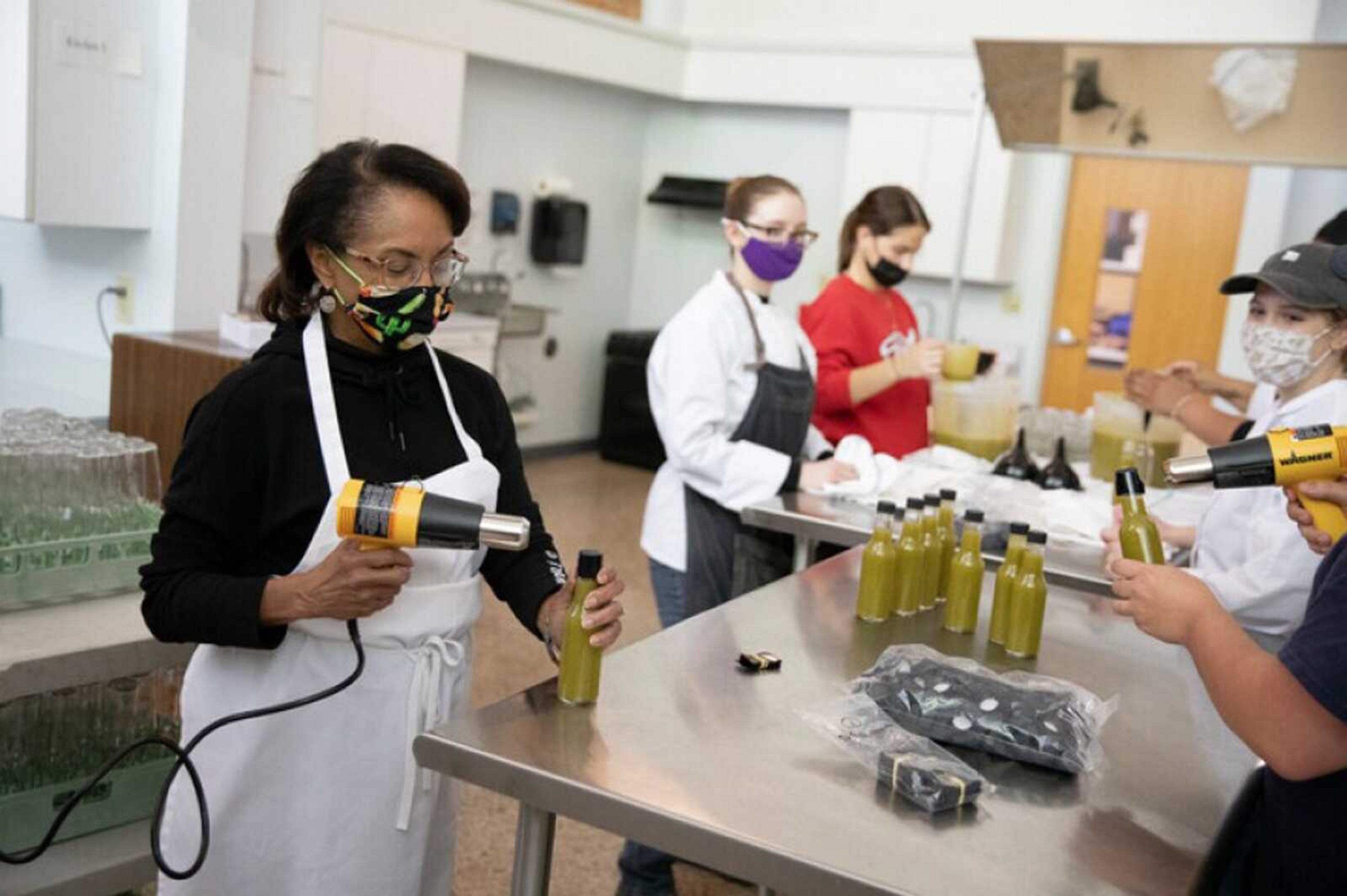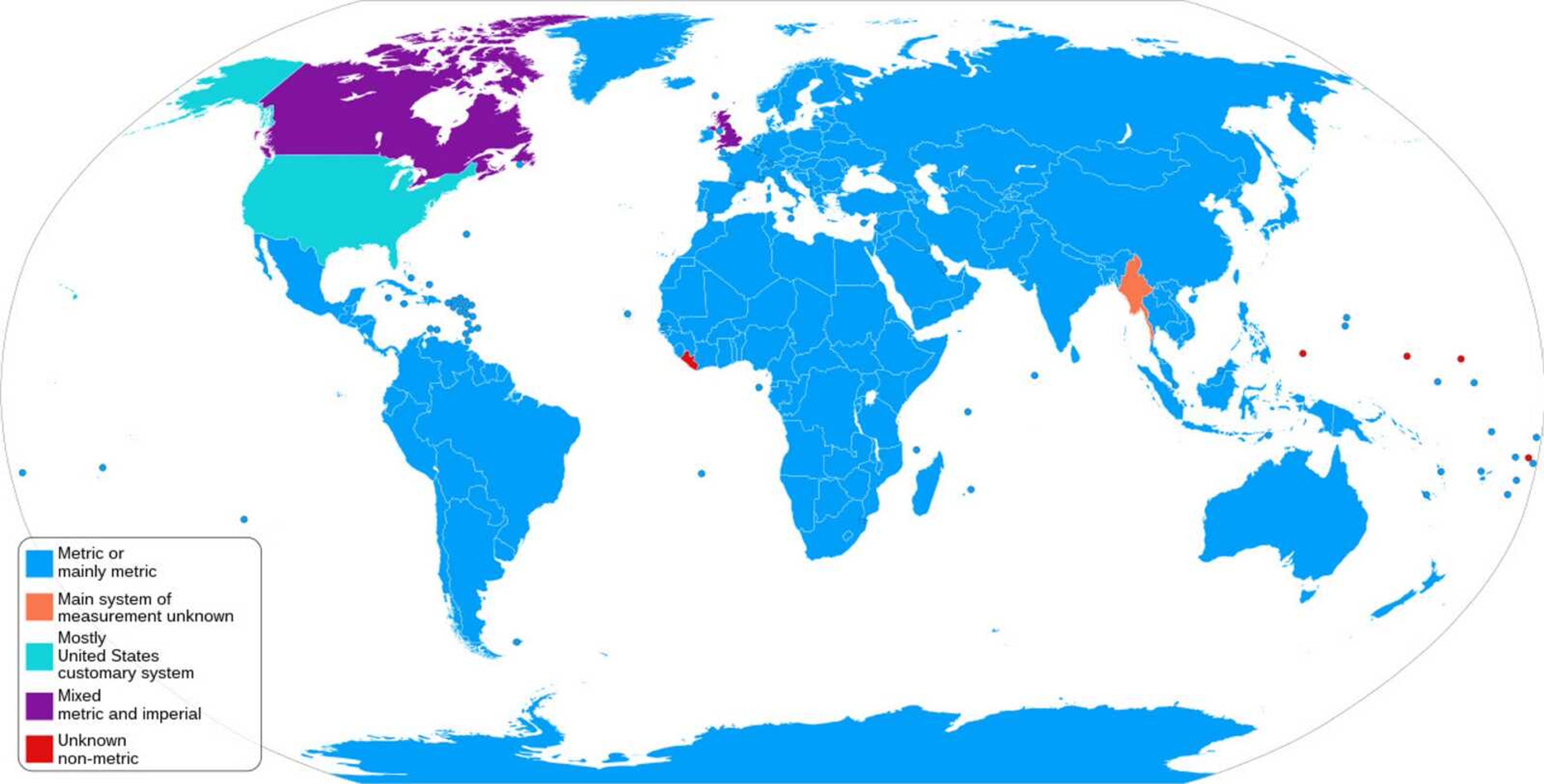Jim Gaffigan, 55, has been making a living doing standup comedy for 30 years.
The Indiana native's observational comedic style often returns Gaffigan to childhood. The following is excerpted from his "Idiot Abroad" special on Netflix.
"When I was growing up, they're like, 'Learn the metric system, everyone learn it, a big switch is coming up.' Ten years later, they're like, 'Never mind. It's too hard. It's based on tens.'"
Referred to as the International System of Units, the metric system is used commonly by virtually all the world's nations. Except for America's scientific community, the U.S. uses the customary (or imperial) system of measurement. Liberia, Samoa, Palau, Micronesia and the Marshall Islands, for example, use non-metric systems. The United Kingdom and Canada use a mix of imperial and metric.

Philip Crawford, chairman of Southeast Missouri State University's Chemistry and Physics Department, attempts to put the situation in real terms.
"Going from Cape Girardeau to St. Louis, for instance, is roughly 120 miles and people are very familiar with measuring distances in that way. You change all those signs to kilometers and 120 becomes 193.1. The general public doesn't really have a concept of what a metric distance actually means," Crawford said.

Crawford's departmental colleague, Silwal Sajan, is a native of a metric nation, Nepal.
"I came here as a graduate student and it was difficult reconceiving measurements. I didn't know the mile; I knew kilometers. Even the day-to-day temperature scale. I'd hear a report saying 86 degrees, which means Fahrenheit. I grew up with Celsius and in Celsius, Fahrenheit's 86 is 30. I knew how much clothing to wear depending on hot or cold it would be outside. In my early days in this country, it was very hard as an international student to rethink and recalculate," Sajan said.
"In the laboratory, in the scientific community, we don't think in terms of pounds, feet or inches. When I step out of the lab, though, I'm in the imperial system," Crawford added.
Metric's presence

David Yaskewich, chairman of SEMO's Accounting, Economics and Finance Department, indicated longstanding U.S. law requires, at least from a business perspective, a bilingual approach to measurement.
"The Fair Packaging and Labeling Act (FPLA) is required of most packaged products in the U.S.," he said. "My hand sanitizer has metric and customary units on the packaging. There is a bottle of hot sauce on my bookshelf that our hospitality management students at SEMO make and sell at Catapult Creative House on Broadway and it has both, too."
The limited edition "Go Green for Spring" Hot Sauce was produced at $10 per bottle in spring semester 2021.
FPLA, passed in 1967 under the Johnson administration, added the metric labeling requirement decades later, taking effect in February 1994.

Questions
After arriving in the U.S., Sajan said he asked colleagues about America's usual system of measurement.
"I asked why the U.S. did not change and I was told America had been with the imperial system for such a long time and that the U.S. wants to be unique in every aspect, to be unique from other countries," Sajan said.
"When I hear people say we're not a metric country, yes, it's true," Yaskewich noted. "If I drive on U.S. roads, I don't see kilometers per hour. If I get a speeding ticket, I'm not told I went so many kilometers over the speed limit. In that sense, we don't have metric, but in terms of voluntary usage in products, I've seen a good amount of metrification either creep in or be gradually embraced."
Problems
The daily use of two systems of measurement — imperial and metric — can have a real human cost.
"NASA had a probe, part of one of its Mars projects, that burned up when it entered the Martian atmosphere in the late 1990s. The probe came in too low," Crawford recalled. "Basically, this occurred because they failed to use metric units in the coding of the software. Yes, there have been incidents where mistakes have been made by scientists who grew up in the imperial system and failed to take metric into consideration."
Crawford refers to the Mars Climate Orbiter, lost above the so-called "Red Planet" on Sept. 23, 1999.
After an investigation by the space agency, the following conclusion was released publicly: "Failure resulted from a navigational error due to commands from Earth being sent in English units, pound-seconds, without being converted into standard metric, or Newton-seconds."
What's ahead
Yaskewich was asked whether full conversion to the metric system is in America's future.
"I don't know the answer to that question. We've held out for a long time," he said. "I don't see the pressing need and I don't hear a groundswell of demand to go to metrification officially because a lot of voluntary action has already taken place. Any company wanting to do international trade, though, is either using the metric system or it's behind."
Crawford doesn't see a large economic downside to converting.
"When you go back to the late 1970s into the early 1980s, when the U.S. tried to make the switch, one of the arguments against converting to metric was the economic cost. You'd have to switch all the road signs and make all product packaging comply," he said. "Once you absorb the short-term expense, though, there shouldn't be an additional cost. I hope there's a day when we switch to metric but I don't know it's going to happen in my lifetime."
Sajan, who grew up with metrification, holds out hope.
"The world is now a global village. If the U.S. would adopt the metric system, it would be easier in many senses," he said.
Do you want more business news? Check out B Magazine, and the B Magazine email newsletter. Go to www.semissourian.com/newsletters to find out more.
Connect with the Southeast Missourian Newsroom:
For corrections to this story or other insights for the editor, click here. To submit a letter to the editor, click here. To learn about the Southeast Missourian’s AI Policy, click here.










